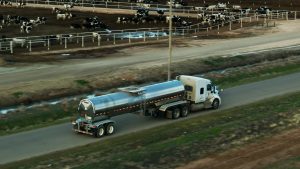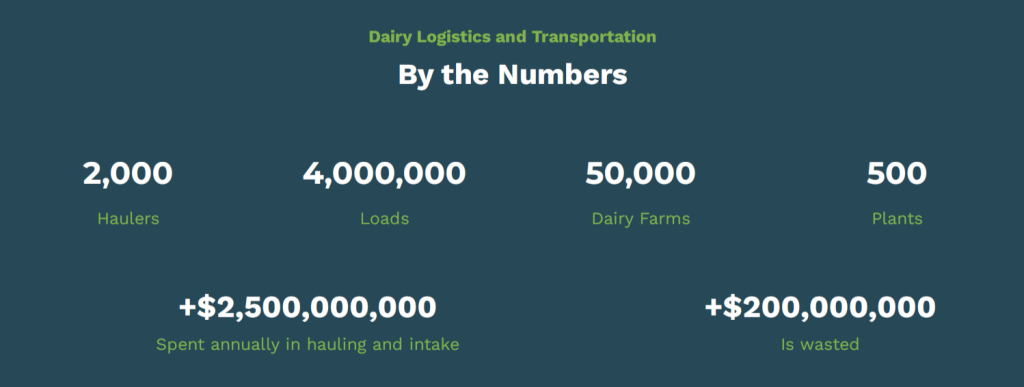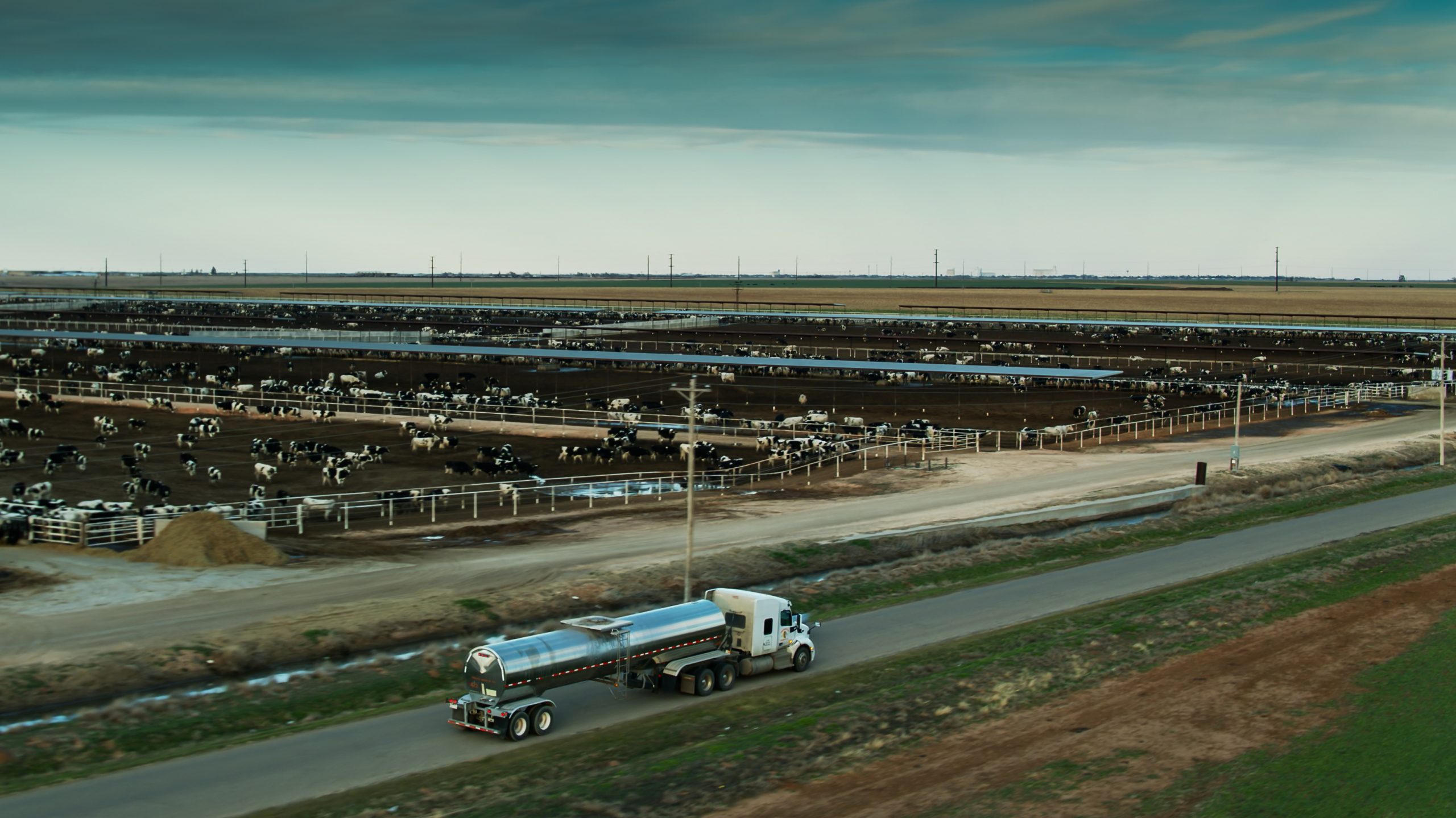Digital tools simplify dairy business

The industry now spends more than $2.5 billion annually on hauling and intake. However, the sad truth is that far too much of that cost – estimated to be in excess of $200 million annually — is wasted.
Each year about 2,000 American transporters move more than four million loads of milk and milk products from 50,000 domestic dairy farms to and between 500 plants — with little margin for error.
And, the associated transportation costs have grown a lot. The industry now spends more than $2.5 billion annually on hauling and intake. However, the sad truth is that far too much of that cost – estimated to be in excess of $200 million annually — is wasted.
Wasted on what? Well, excess wait time and detention costs, overpaying some haulers while underpaying others (ultimately resulting in hauler consolidation and higher rates), running outmoded, small, high-maintenance equipment, excess intake time and labor, and moving milk and milk products further than necessary, for example.
Historically, the dairy industry has had to live with the waste because of the challenges in accurately determining true hauler costs, bench-marking haul rates, assessing and optimizing intake performance, optimizing hauling efficiency, and finding sales or sources in real-time. There were too many different routes, too many plants, too many haulers, too many different approaches to farm pickup, delivery, and receiving, too many equipment types — just too much information to process and optimize.
Today, progressive managers are not longer accepting opaqueness, over-dependency and lack of quantifiable proof. They want to improve their performance, and toward that end they are seeking more accurate operational and haul-rate benchmarks, transparency and a real-time view of dairy markets. Consequently, a digital evolution is gathering steam, centered around five key areas:
Enjoying our insights?
Subscribe to our newsletter to keep up with the latest industry trends and developments.
Stay Informed— Digitization and Outsourcing of Dairy Scheduling and Trading

Managers want to improve their performance, and toward that end they are seeking more accurate operational and haul-rate benchmarks, transparency and a real-time view of dairy markets. Consequently, a digital evolution is gathering steam…
Dairy scheduling and trading platforms are where it all began with the development and adoption of technologies for connecting the supply chain — plants, dispatchers, haulers, trading partners — for the purpose of scheduling, trading, scheduling contract hauls, and obtaining real-time bids from spot haulers.
Digitization opened up another opportunity as well. Having all critical information available online and in real-time enables operators to manage their own supply chains better — or leverage outside experts to manage their supply chains for them. These experts may have more focus and knowledge about market conditions, hauling, and trading options — and the personnel to pick up the phone day or night to handle problems when they arise.
— Plant-to-Plant Haul Cost Optimization
Applying statistical analysis and business intelligence tools to these vast data sets yielded the second significant innovation — bench-marking rates for any plant-to-plant spot or contract move anywhere in the country, in real-time. This enables dairy and hauling procurement leaders to determine which of their rates are competitive and which aren’t. From here, they can quickly determine which ones should be renegotiated or re-bid.
The analysis also shows whether better rates can be found through contracting or on the spot market. In fact, spot rates have been so attractive that spot volumes have increased 10 times in the last two years.
— Detailed Farm-to-Plant Route Cost Modeling

Every farm pickup, route, and delivery can be costed out accurately, enabling precise calculation of hauler margins, design of fair and consistent hauler pay structures, and calibration of member hauling contributions appropriate to each farm type, size, and location…
For farm-to-plant movements, detailed route cost modeling has become a powerful reality. Tools that accurately generate miles for the tens of thousands of segments inherent in large manifest sets, apply dozens of cost factors for drivers, fuel, and equipment of every size and type, and generate time factors for all varieties of farm pickup and plant delivery.
Every farm pickup, route, and delivery can be costed out accurately, enabling precise calculation of hauler margins, design of fair and consistent hauler pay structures, and calibration of member hauling contributions appropriate to each farm type, size, and location — so haulers can be paid competitively, yet sustainably, and cooperatives can eliminate hauling subsidies. This capability is a game-changer, putting milk handlers in the driver’s seat and arming them with bulletproof data.

Each year about 2,000 American transporters move more than four million loads of milk and milk products from 50,000 domestic dairy farms to and between 500 plants — with little margin for error.
— Intake Benchmarking and Optimization
Above all else, intake delays are likely the biggest single source of wasted time and cost in the dairy supply chain — well over $100 million per year. The variety of ways plants agitate, sample, test, pump, wash, and seal is wondrous and terrifying in terms of physical layout, equipment, process, receiver, and driver roles — and these differences translate to cost.
Today, the best intakes process loads at roughly one-third the cost of the worst intakes — meaning hundreds of thousands, or even millions of dollars down the drain in a poorly performing intake, often choking profits of the plant, supplier and hauler. The fourth innovation, intake benchmarking and optimization, addresses this issue — providing time, resource and cost benchmarks for every intake process step (and end-to-end), best practices, and rigorous time and cost measurement and modeling.
While the variety of different environments in which intakes operate means there is no single best approach, these innovative solutions enable determination and quantified business case in support of the most cost-effective set of improvements.
— Plant Design With 3D-Simulation

The theme of a digital revolution is clearly visible throughout each of these innovations — not as a replacement for judgment, but as an enhancer.
Optimizing the design of a plant, particularly one with complex interactions between people, equipment, process and layout, with a variety of products with individual paths competing for the same work centers, and with variability in demand and process time, has been a confounding if not impossible task. Traditional tools like CAD and spreadsheets just don’t reflect the complex realities that plant managers and operators face.
The good news is the fifth innovation: 3D simulation modeling. The most progressive companies in the dairy industry have seen it and appreciate the value of seeing their plant operating — equipment, people and material moving and interacting all in accordance with product recipes and time factors — all before the operation is built.
With 3D simulation modeling, those building or expanding plants can engage every function in identifying problems and creating solutions and measure how a design performs on the dimensions of throughput, process time, people, and equipment utilization. They can adjust and assess resource levels, roles and automation alternatives — yielding better designs, clearer specs for engineers, and plants that perform exceptionally well in the real world.
The Future of the Digital Revolution for the Dairy Supply Chain
The theme of a digital revolution is clearly visible throughout each of these innovations — not as a replacement for judgment, but as an enhancer. By putting more high-quality information in the hands of industry leaders, dairy managers can do the right thing and drive better performance for their organizations, shareholders and members.
Moving forward, the dairy industry has an incredible opportunity to save hundreds of millions of dollars by using the insights derived from these digital innovations to become much more efficient and effective. The industry has come a long way from the horse and wagon, and there’s still more exciting work and evolution ahead. The innovations are real. They’re tried, tested and truly remarkable in the results they produce. They’re exciting. And they’re here now.


















